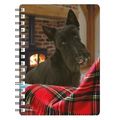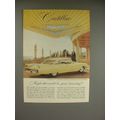Ship - HMS Furious, aircraft carrier 1936, Plymouth - limited ed. postcard 1994
- Condition : Used
- Dispatch : 2 Days
- Brand : None
- ID# : 143196537
- Quantity : 1 item
- Views : 1266
- Location : United Kingdom

- Seller : justthebook (+1704)
- Barcode : None
- Start : Sat 26 Sep 2015 05:20:55 (EDT)
- Close : Run Until Sold
- Remain : Run Until Sold
Checks/Cheques
 for 1 item(s) edit
for 1 item(s) edit
Shipping Calculator
More Listings from This Seller view all
Seller's Description
- Postcard
- Picture / Image: Aircraft Carrier HMS Furious at Plymouth, 1936
- Publisher: Marquis of Grouchy Ltd., St Peter Port, Guernsey / Edition of 1000, published 12 May 1994
- Postally used: no
- Stamp: n/a
- Postmark(s): n/a
- Sent to: n/a
- Notes / condition:
Please ask if you need any other information and I will do the best I can to answer.
Image may be low res for illustrative purposes - if you need a higher definition image then please contact me and I may be able to send one. No cards have been trimmed (unless stated).
------------------------------------------------
Postage & Packing:
Postage and packing charge should be showing for your location (contact if not sure).
No additional charges for more than one postcard. You can buy as many postcards from me as you like and you will just pay the fee above once. Please wait for combined invoice. (If buying postcards with other things such as books, please contact or wait for invoice before paying).
Payment Methods:
UK - PayPal, Cheque (from UK bank) or postal order
Outside UK: PayPal ONLY (unless otherwise stated) please. NO non-UK currency checks or money orders (sorry).
NOTE: All postcards are sent in brand new stiffened envelopes which I have bought for the task. These are specially made to protect postcards and you may be able to re-use them. In addition there are other costs to sending so the above charge is not just for the stamp!
I will give a full refund if you are not fully satisfied with the postcard.
----------------------------------------------
Text from the free encyclopedia WIKIPEDIA may appear below to give a little background information (internal links may not work) :
*************
HMS Furious was a modified Courageous-class battlecruiser built for the Royal Navy (RN) during the First World War. Designed to support the Baltic Project championed by the First Sea Lord of the Admiralty, Lord John Fisher, the ship was very lightly armoured and armed with only a few heavy guns. Furious was modified and became an aircraft carrier while under construction. Her forward turret was removed and a flight deck was added in its place, so that aircraft had to manoeuvre around the superstructure to land. Later in the war, the ship had her rear turret removed and a second flight deck installed aft of the superstructure, but this was less than satisfactory due to air turbulence. Furious was briefly laid up after the war before she was reconstructed with a full-length flight deck in the early 1920s.
After her conversion, Furious was used extensively for trials of naval aircraft and later as a training carrier once the new armoured carriers like Ark Royal entered service in the late 1930s. During the early months of the Second World War the carrier spent her time hunting for German raiders in the North Atlantic and escorting convoys. This changed dramatically during the Norwegian Campaign in early 1940 when her aircraft provided air support to British troops ashore in addition to attacking German shipping. The first of what would be a large number of aircraft ferry missions was made by the carrier during the campaign. After the withdrawal of British troops in May, Furious made several anti-shipping strikes in Norway with little result before beginning a steady routine of ferrying aircraft for the Royal Air Force.
At first Furious made several trips to West Africa, but she began to ferry aircraft to Gibraltar in 1941. An unsuccessful attack on German-occupied ports on the Arctic Ocean interrupted the ferry missions in mid-1941. Furious was given a lengthy refit in the United States and spent a few months training after her return in April 1942. She made several more ferry trips in mid-1942 before her aircraft attacked airfields in Vichy French Algeria as part of the opening stages of Operation Torch in November 1942. The ship remained in the Mediterranean until February 1943 when she was transferred to the Home Fleet.
Furious spent most of 1943 training, but made a number of attacks on the German battleship Tirpitz and other targets in Norway during the first half of 1944. By September 1944, the ship was showing her age and she was placed in reserve. Furious was decommissioned in April 1945, but was not sold for scrap until 1948.
During the First World War, Admiral Fisher was prevented from ordering an improved version of the preceding Renown-class battlecruisers by a wartime restriction that banned construction of ships larger than light cruisers. To obtain ships suitable for traditional battlecruiser roles, such as scouting for fleets and hunting enemy raiders, he settled on ships with the minimal armour of a light cruiser and the armament of a battlecruiser. He justified their existence by claiming he needed fast, shallow-draught ships for his Baltic Project, a plan to invade Germany via its Baltic coast.[3][4]
Furious had an overall length of 786 feet 9 inches (239.8 m), a beam of 88 feet (26.8 m), and a draught of 24 feet 11 inches (7.6 m) at deep load. She displaced 19,513 long tons (19,826 t) normally and 22,890 long tons (23,257 t) at deep load. She had a metacentric height of 5.33 feet (1.6 m) at deep load.[5] Furious and her half-sisters were the first large warships in the Royal Navy to have geared steam turbines. To save design time the installation used in the light cruiser Champion, the first cruiser in the RN with geared turbines, was copied and simply duplicated to provide two sets of turbines. The four Brown-Curtis turbines were powered by eighteen Yarrow small-tube boilers that were designed to produce a total of 90,000 shaft horsepower (67,000 kW). The ship's speed was an estimated 31.5 knots (58.3 km/h; 36.2 mph), but she never ran her sea trials.[6]
Furious was designed to normally carry 750 long tons (762 t) of fuel oil, but could carry a maximum of 3,160 long tons (3,211 t). At full capacity, she could steam for an estimated 6,000 nautical miles (11,110 km; 6,900 mi) at a speed of 20 knots (37 km/h; 23 mph).[7] The ship was designed to carry two BL 18-inch Mark I guns in two single turrets, one each fore ('A') and aft ('Y'). Her secondary armament consisted of 11 BL 5.5-inch Mk I guns. A pair of QF 3 inch 20 cwt[Note 1] anti-aircraft guns were mounted before the funnel. Furious also mounted two submerged tubes for 21-inch torpedoes and 10 torpedoes were carried.[7]
Even as she was being built, Furious was modified with a large hangar capable of housing ten aircraft on her forecastle that replaced the forward turret. A 160-foot (49 m) flight deck was built along its roof. Aircraft were flown off and, rather less successfully, landed on this deck. Floatplanes like the Short Type 184 used a four-wheel trolley that ran down a track along the centre of the flight deck for take-off. Aircraft were lifted by crane from the hangar to the flight deck. Although the aft turret was fitted and the gun tested, it was not long before Furious returned to her builders for further modifications. In November 1917, the rear turret was replaced by a 300-foot (91 m) deck for landing aircraft over another hangar.[8] Her funnel and superstructure remained intact, with a narrow strip of decking around them to connect the fore and aft flight decks.[9] Turbulence from the funnel and superstructure was severe enough that only three landing attempts were successful before further attempts were forbidden.[10] Her 18-inch guns were reused on Lord Clive-class monitors General Wolfe and Lord Clive during the war.[11]
Furious was laid down on 8 June 1915 at Armstrong Whitworth's Low Walker shipyard in Newcastle upon Tyne. The ship was launched on 18 August 1916[7] and commissioned on 26 June 1917.[12] As completed, her complement numbered 737 officers and enlisted men.[13]
On 2 August 1917, while performing trials, Squadron Commander Edwin Dunning landed a Sopwith Pup, believed to have been N6453, successfully on board Furious, becoming the first person to land an aircraft on a moving ship. On 7 August, he made one more successful landing in the same manner, but on his third attempt, in Pup N6452, the engine choked and the aircraft crashed off the starboard bow, killing him. The deck arrangement was unsatisfactory because aircraft had to manoeuvre around the superstructure in order to land.[14]
In the meantime, all three Courageous-class ships were assigned to the 1st Cruiser Squadron (CS) in October 1917 when the Admiralty received word of German ship movements on 16 October, possibly indicating a raid. Admiral Beatty, commander of the Grand Fleet, ordered most of his light cruisers and destroyers to sea in an effort to locate the enemy ships. Furious was detached from the 1st CS and ordered to sweep along the 56th parallel as far as 4° East and to return before dark. Her half-sisters Courageous and Glorious were not initially ordered to sea, but were sent to reinforce the 2nd Light Cruiser Squadron patrolling the central part of the North Sea later that day.[15] Two German Brummer-class light cruisers managed to slip through the gaps in the British patrols and destroyed the Scandinavia convoy during the morning of 17 October, but no word was received of the engagement until that afternoon. The 1st CS was ordered to attempt to intercept the German ships, but they proved to be faster than hoped and the British ships were unsuccessful.[16]
Furious returned to the dockyard in November to have the aft turret removed and replaced by another deck for landing, giving her both a launching and a recovery deck. Two lifts (elevators) serving the hangars were also installed. Furious was recommissioned on 15 March 1918, and her embarked aircraft were used on anti-Zeppelin patrols in the North Sea after May. In July 1918, she flew off seven Sopwith Camels which participated in the Tondern raid, attacking the Zeppelin sheds there with moderate success.[17]
type=printed
period=post-war (1945 - present)
postage condition=unposted
number of items=single
size=standard (140x89mm)
county/ country=devon
Listing Information
| Listing Type | Gallery Listing |
| Listing ID# | 143196537 |
| Start Time | Sat 26 Sep 2015 05:20:55 (EDT) |
| Close Time | Run Until Sold |
| Starting Bid | Fixed Price (no bidding) |
| Item Condition | Used |
| Bids | 0 |
| Views | 1266 |
| Dispatch Time | 2 Days |
| Quantity | 1 |
| Location | United Kingdom |
| Auto Extend | No |
| Subject | Battle Ship |



















